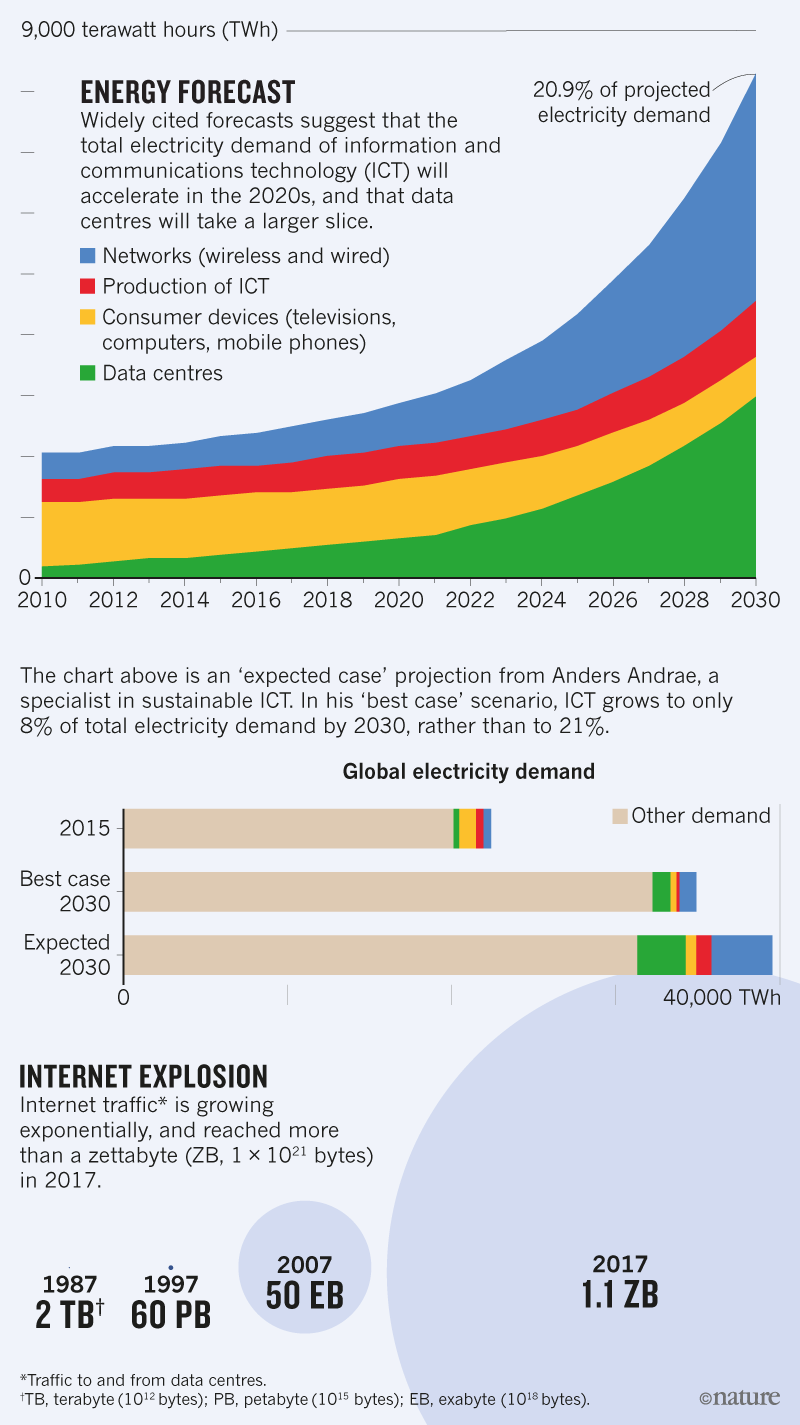In this article from Nature, the ICT industry is climbing up rapidly with the energy consumption.
“one of the most worrying models predicts that electricity use by ICT could exceed 20% of the global total by the time a child born today reaches her teens, with data centres using more than one-third of that (see ‘Energy forecast’)“.

Turning to hyperscale architecture, and running with hot and cold of optimized cooling solution, are reducing the power usage quite effectively in the past years. But there are still some more possibilities for us to do further:
- Better cooling solutions for hot area regions.
– “Exploring innovative cooling solutions and making existing ones cheaper will become more important in coming years, says Carter. “As we connect the world, there’s areas that won’t be able to use free air cooling,” he notes, pointing to Africa and southern Asia.” - Making free cooling solution for smaller edge sites which will be important for the coming AI applications.
– “And other developments will tax IT infrastructure in new ways. If self-driving cars flood onto the roads, for example, small server installations at the base of mobile-phone towers, used to help those cars communicate and process data, will need high-power devices that can handle real-time AI workloads — and better cooling options. This year, the Open Compute Project launched a project on advanced cooling, with the aim of making efficient cooling systems more accessible. “The hyperscalers have it figured out; they’re extremely efficient,” says Carter. “We’re trying to help the other guys.”” - Making good use of waste heat from servers.
– “Hand-in-hand with better cooling is the idea of using the heat coming off the servers, thus saving electricity demand elsewhere. “It’s like a free resource,” says IBM researcher Patrick Ruch in Zurich. There are a few examples: the Condorcet data centre in Paris sends its waste heat directly into a neighbouring Climate Change Arboretum, where scientists study the impacts of high temperatures on vegetation. An IBM data centre in Switzerland warms a nearby swimming pool. But heat doesn’t travel well, so waste-heat use tends to be limited to data centres located next to a convenient customer, or in a city that already uses piped hot water to heat homes. A scattering of players are aiming to make waste heat more generally usable, including preliminary efforts to turn it into electricity. Others aim to use the waste heat to run cooling devices — IBM’s US$2-million project THRIVE, for instance, is developing new materials that can better soak up water vapour and release it when exposed to heat, to make more efficient ‘sorption heat pumps’ to keep data centres cool.”
Check more here from Nature website.

Leave A Comment
You must be logged in to post a comment.